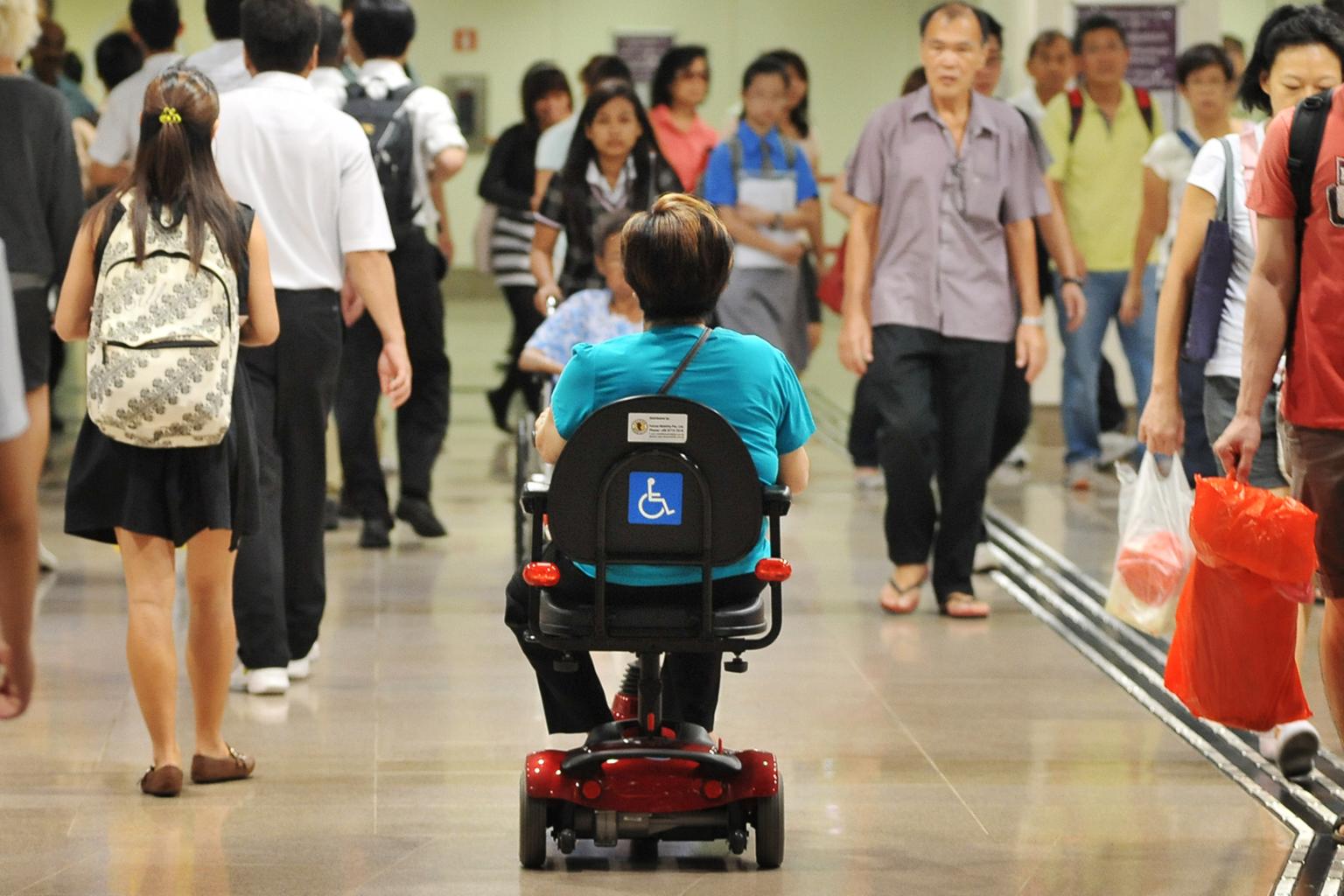New building rules to improve accessibility for elderly, disabled
Effective from next Jan 6, they will apply to new buildings and those undergoing major renovations
Sign up now: Get ST's newsletters delivered to your inbox

Buildings will be required to provide larger accessible toilets on every floor, so that motorised wheelchairs can manoeuvre.
PHOTO: ST FILE
Rahimah Rashith
Follow topic:
From Jan 6 next year, new buil-dings or buildings undergoing large-scale renovations will have to ensure that they fulfil new accessibility regulations.
These include building more spacious changing rooms and toilets for the convenience of the elderly, their caregivers and the disabled to give them a more accessible and convenient living environment.
The new regulations are part of an update made on July 5 by the Building and Construction Authority to its Code on Accessibility in the Built Environment.
Two key changes will be implemented. The first is a requirement for accessible changing rooms for adults with disability or seniors who need caregivers to help change them. There was no such provision previously.
Second, buildings will be required to provide larger accessible toilets on every floor so that motorised wheelchairs can manoeuvre.
These apply to buildings such as healthcare facilities, key transport nodes such as interchanges and larger shopping malls, as well as learning institutions.
The minimum size of such toilets will be 1.8m by 2.1m.
Previously, at least one accessible washroom was provided at every level of non-residential buildings where toilets were provided. The minimum size then was 1.75m by 1.75m.
In a Facebook post on Wednesday night, Minister for Social and Family Development Desmond Lee said the new regulations were made with the needs of the elderly and the disabled in mind.
"Singapore is a lot more accessible today than before, but a lot more needs to be done," he said.
Full-time caregiver Ei Phyu Zin, 31, of Active Global Caregivers, said the regulatory changes will ease her everyday grievances about using toilets in buildings when she is with the 75-year-old wheelchair-bound woman she cares for.
"Taking a wheelchair-bound patient out can often be tedious and tiring. These additional support changes made to buildings are very welcome as they help us deal with some of the practical day-to-day challenges that we face," she said.
"For example, the current cubicles for the handicapped in toilets are not big enough to accommodate a bulky wheelchair, the elderly whom I care for and myself, as I also have to be in the toilet to help her," she added.
"This can get frustrating at times. Therefore, bigger toilets would be very helpful."

